World Café
After graduation, Ana Builes spent a year visiting the biggest coffee-producing countries in the world in an effort to discover the secrets behind one of the world’s most popular drinks.
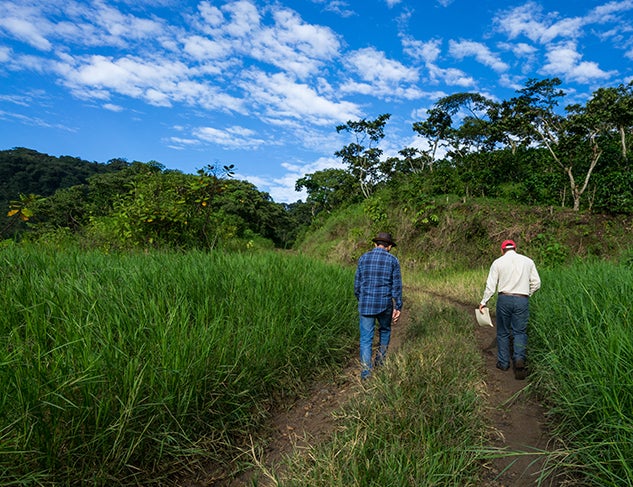
Summer 2018
Story and photos by Ana Builes
Ana Builes ’14 spent a postgraduate year traveling the world courtesy of a Roy and Hazel Zeff Fellowship for independent study. The Colombia native chose to study coffee’s journey — through its production and its people — around the world. “I started my journey in Central America and made my way through South America, East Africa and Southeast Asia. Throughout, I explored coffee from bean to cup and got to meet the incredible people involved in the production of our favorite brew.” Builes illustrates different stages of coffee production — harvesting, processing and selling — through the perspective of farmers from three countries.
MEXICO: Where I learned how coffee is harvested on a large farm
I started my journey in Mexico, where coffee is predominantly grown in the southernmost state of Chiapas. It is not a plant native to the Americas. Coffee, born in Ethiopia, flourished in the colonial New World of appropriated land and slave labor. The coffee tree was first introduced to the lush shores of Hispaniola, what is now the island split by Haiti and the Dominican Republic. From there it quickly spread all over Central and South America.
I spent my first day in Tuxtla Gutiérrez, the capital of Chiapas, in a small museum dedicated to coffee. The museum was quiet at that early hour, and I struck up a conversation with its only other inhabitant, a thin man who filled the empty rooms with a boundless stream of stories. Ricardo, coincidentally, was a coffee farmer. He would become my first guide into the world of coffee.
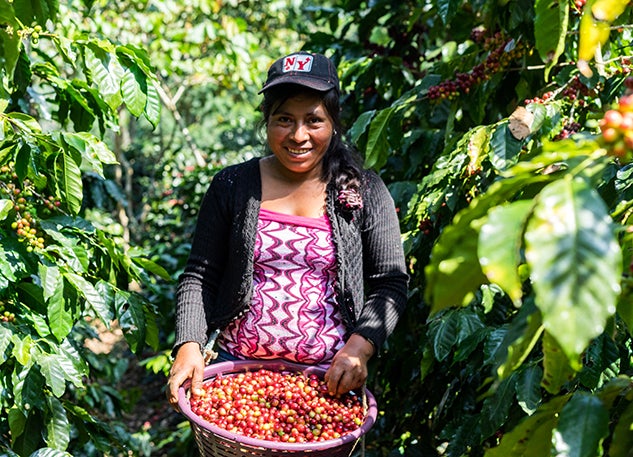
After telling him of my planned travels around the world, Ricardo offered to take me to his farm the next day. At dawn, we met at an empty gas station and began the seven-hour journey into the mountains. Ricardo, of course, did all the talking. In the passing hours, some of the topics mentioned were these: faltering coffee farms in Mexico eaten up by pests that thrive in the rising temperatures of a heated planet; the struggle of growing coffee trees in a country where politicians care only about the kinds of trees that grow money and powerful friends; the beautiful promises of fair-trade cooperatives and the ugly truths that lay beneath. “These cooperatives, the ones you like — they sneeze and they catch pneumonia. In other words, it’s not easy, is it?”
After a bruising last push through the mountains, we arrived at the farm. The coffee trees were arranged in neatly spaced rows across several hills, like lines drawn on a sheet long enough to fit one of Ricardo’s stories. We walked through the endless rows of green while Ricardo explained how the coffee was grown and harvested on his farm.
The coffee we drink every morning is actually the seed of a small cherry, grown in tropical, mountainous places around the world. Although there are thousands of coffee species, only two are widely grown: Arabica and robusta. Arabica is grown at higher altitudes and produces better quality coffee — this is what you will find at your regular Starbucks. Robusta, as the name implies, is made of hardier stuff and can hold its own at lower altitudes while producing more coffee per tree. Ricardo, like most farmers in the area, chose the route of quality over quantity and planted only Arabica on his farm. “We do it, how do the gringos say? State of the art. We want to grow the best coffee to get the best price possible.”
Starting in late December each year, the farm swells with migrant workers drawn to the ripening cherries, ready to start the harvest. I joined the harvest for a day with Santos, a young woman from northern Guatemala who had been coming to the farm every season for the past five years. Throughout the day, Santos made her way across the rows, carefully picking only ripe, red cherries and slowly filling her costal. Once the large basket was brimming with fruit, she made her way down the hill toward the central processing station.
At the station, Santos stood behind other pickers with her costal. Once her turn came up, a manager dumped the heavy basket of cherries into a container lined with measurements. A woman with a ledger sat nearby, carefully noting the volume next to each picker’s name. At the end of the season, Santos collects her earnings by the weight of her harvest.
After the cherries were measured, the manager pulled a lever and released the bottom of the container, spilling hundreds of cherries into a vast vat where the processing began.
KENYA: Where I learned how the cherries are processed to separate the coffee bean from the fruit
Powered by water, the cherries are forcibly removed from the sticky seeds of what eventually becomes coffee in a widely used method aptly called wet processing. In Mount Kenya, I joined a small cooperative in the midst of the hectic harvest. Farmers with small plots of land picked the cherries themselves and carried them down the road to the wet mill to begin the process. Daniel, the president of the cooperative who owns the mill, invited me to stay with his family for a couple of days.
Before the harvest began, Daniel walked me around the limits of the small town. The farmers divided their land into tracts of coffee and tea. As we walked, we saw bended waists emerging softly among the tea leaves. Each woman carried a basket on her back and efficiently picked her way through the rows. At the edges of the town, I noticed barbed wire fencing holding back the wild forests of the mountain. “That’s to keep the elephants from trampling us,” Daniel explained.
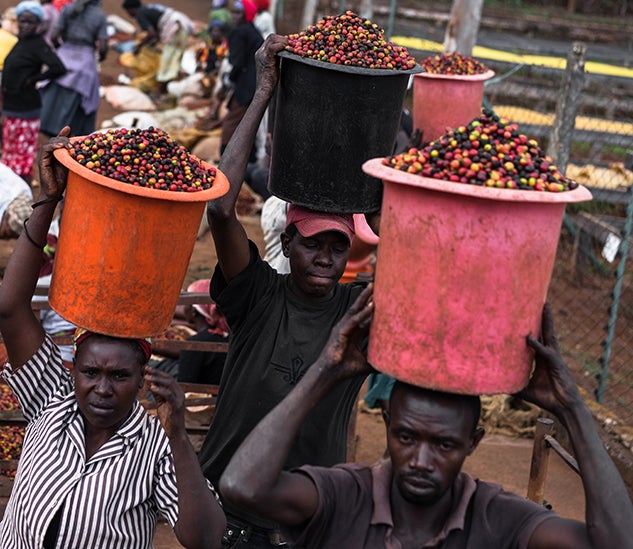
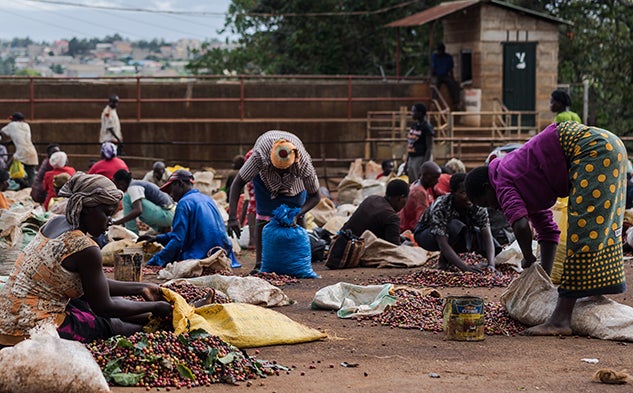
Daniel and the rest of the farmers are Kikuyu, the most populous and politically significant ethnic group in Kenya. Brought to the country by Scottish missionaries, coffee was originally plunder for Kenya’s British colonizers. After the country’s liberation, coffee cooperatives became the source of new African political and economic leadership. Kenyan coffee, with its consistent quality, became highly sought after the world over. Now, however, some farmers wonder whether the famously finicky bean is worth the expense.
We walked back to the mill where farmers had spread the day’s harvest on a tarp. Before loading the cherries into the mill, Kenyan farmers take the extra step of sorting to pick out any defects, like green cherries. This is another layer of quality control that goes into the production of a great coffee. Once finished, each farmer carried a bucketful of cherries to the mill and dumped it in the running water to begin the process. The cherries were channeled into a pulper, a whirling machine that peels off the fruit and leaves behind the sticky beans covered in pulp. The beans were then carried along a waterway into large tanks, where they sat for hours to allow fermentation to remove the pulpy exterior of the bean. In Kenya, unlike most countries around the world, the beans are then fermented again to ensure a truly clean and complex cup of coffee with no latent taste of rotting fruit.
After fermentation was finished and the beans manually washed, the cooperative moved the coffee onto large drying racks to bring down the moisture content. At this point, the coffee bean is surrounded by a thin skin called the parchment. Drying the coffee properly requires patience and exquisite precision — not too fast, not too slow, not too dry, definitely not too wet, but just right. The Goldilocks treatment can take weeks depending on the weather, and at any point, years of hard work can be undone. Now we waited and watched.
VIETNAM: Where, after all that work, I talked to a farmer about the difficulty of selling coffee
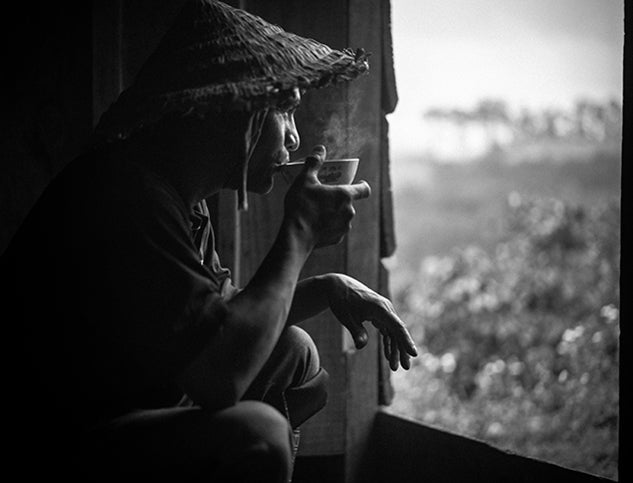
Finally, the coffee must be sold. At the end of my travels, I stayed with a farmer in the highlands of Central Vietnam. The rest of the country is hot and humid, but deep in the mountains in the midst of the rainy season I shivered my way through the nights. A friend from a nearby city agreed to take me on the back of his motorcycle out to the small farm. We drove through the torrential rains fast enough that the droplets became bruising bullets, and I stopped trying to keep my eyes open. After several hours we arrived at the small house where the farmer, Djim, came out to greet me. My Vietnamese barely stretched to include “thank you,” and he did not speak a word of English. Surprisingly, the language that connected us was French. “Ça va?”
French colonists originally brought coffee to Vietnam. Most of the coffee production was centered on the Central Highlands of Vietnam — high, cool places where coffee grew well. After the French left and Americans came in, the center of Vietnam became a boundary splitting the country between colonialism and communism. Nevertheless, coffee, the colonial invention, persisted.
After the war, Vietnam became the second-largest producer of coffee in the world. Instead of relying on high-quality Arabica, Vietnam decided to bet big on the hardier robusta, flooding the market with cheap coffee. Most of the Vietnamese harvest grows up to become the instant coffees of the world. There are, however, a few farmers in Vietnam who reject the ecological disaster that is the current model of coffee production. One of those farmers is Djim.
Djim is an ethnic minority, known by the French as the Montagnards, a catch-all term for the various indigenous groups settled in the mountains. The Montagnards were sympathetic to the French and American cause and joined in the fight against the communist North. Many turned back to subsistence agriculture after the disastrous war, planting rice and coffee. Djim and his family decided to work with Arabica beans. It was a big bet in a country that prizes big returns and has little interest in coffee research and production.
After two days of quiet, I drove with Djim and his family farther up the mountain to his small plot of land. The farm was next to an encroaching construction site that had stripped the mountain dry. We spent the next couple of days silently pruning the trees, only stopping to eat a lunch of tofu and veggies they had thoughtfully prepared when they found out I did not eat meat. Through our broken French, occasionally improved by a quick flip through a tattered French dictionary, Djim told me about the struggle of living off the unexpected. Coffee businesses do not come to Vietnam looking to purchase high-quality coffee. He joined a cooperative of indigenous farmers who hoped to collectively improve the quality of their land and harvest. The cooperative has grown and the idea of quality Vietnamese coffee is not the contradiction it once was. During the war, the Montagnards chose to ally themselves with foreigners. Now, Djim and his indigenous cooperative are once again looking to the outside world, hoping to convince coffee drinkers to start their morning with a cup of Vietnamese origin.
Like most coffee-producing countries, Vietnam exports almost all of its coffee to the Western world. Much of the coffee that Djim has sold throughout his lifetime has been bought by traders and then sold to far-flung places, places only his coffee would go and he would never reach. The money has never been good — Djim makes just enough and sometimes less to support his family. The cooperative is hoping to change that. Instead of small farmers each selling their coffee for a pittance, together they can collectively bargain for a better price and better partners. Most of the coffee is still destined for foreign lands, but now a small trickle is making its way to coffee shops in Ho Chi Minh City, where it is sold to Western tourists and the few Vietnamese aficionados willing to invest in quality coffee.
Mexico, Vietnam, Kenya — these countries are representative of the major coffee-growing regions around the world. Once the farmer is done with the beans, they are packaged, shipped, roasted and prepared at a coffee shop near you. Through these farmers, I learned to appreciate coffee as not merely a commodity but as a story — a story that starts at a farm but ends at a coffee shop.
Ana Builes lives in Washington, D.C. Although she has a day job, she recently started her own company, the Capital Grind, to share the story of coffee through tastings and presentations. The best cup of coffee she’s ever had came from Ethiopia, but as a proud Colombian she would deny this if asked. She hopes to one day own her own farm.
Rice videographer Brandon Martin produced this video profile of Ana Builes in 2014 as she was about to embark on the Zeff Fellowship. “I’m really interested in all the issues that surround coffee. That is the culmination of what Rice has done for me and what Rice can do for everyone else, which is to give you unconventional opportunities to explore things that you are incredibly passionate about.”
